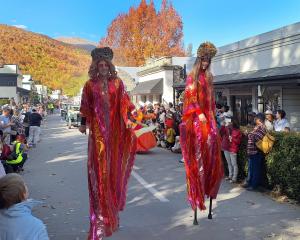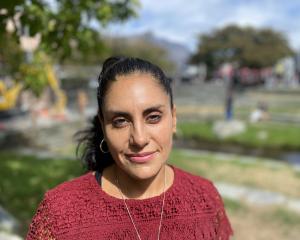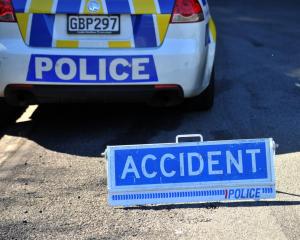Te Anau is increasingly becoming a destination in its own right, with the number of tourism businesses almost doubling in less than a decade. Hamish McNeilly went to see what the attraction is.
Long viewed as a place for tourists to stop on the way from Queenstown to Milford Sound, Te Anau has emerged as an increasingly popular destination in its own right.
No-one perhaps mirrors the picturesque lakeside town's development as much as former backpacker Jill Tauri - who now employs more than 60 people in her various family tourism businesses.
Arriving in 1975, the former Tamworth resident said Te Anau was just a smattering of shops back then, "but had a nice feel about it".
After she met her future husband Clint, the couple worked in his parent's camping ground, before eventually buying it in 1983.
Mrs Tauri said the camping ground attracted the same Southland families each year, many of who had then gone on to living in caravans, then buying cribs, before settling permanently in their own homes in the area.
The increase in population had resulted the town going from one to more than a dozen restaurants and several shops opening along the main street during the busy summer period.
"The feel of Te Anau has always been a positive one, and this is because of the nature of the people who make up the community.
"Te Anau residents take pride in the way their properties are presented and this is well received by visitors."
The town was at its busiest from October to May, when a steady convoy of buses, campervans and cars would stop in for fuel, a meal "or hopefully, to spend a few days", before venturing to Queenstown or Milford Sound.
The nearby great walks of the Milford, Routeburn and Kepler tracks, glow worm caves, and boat or helicopter tours were all popular tourism activities.
Realising the tourism potential of the town and the area, the Tauri family, who bought and sold the Milford Sound Lodge, continue to own the Te Anau Lakeview Holiday Park, Te Anau Lakefront Backpackers, the Tracknet coach services, Fiordland Cruises, and the Edgewater Motel.
"We are trying to be a bit of a one-stop shop," Mrs Tauri said.
While the global recession had affected many New Zealand tourism operators last year, Te Anau had come through relatively unscathed, she said.
Fewer Japanese tourists had been replaced by an increasing number of Australians, eager to see Fiordland.
"Around 5pm, you wouldn't believe the amount of tourists in the town. There are people everywhere."
Te Anau was increasingly becoming a destination in its own right, but the burgeoning tourism industry could be under threat if plans for a direct link between Queenstown and Milford Sound went ahead.
Mrs Tauri said she preferred the Hollyford to Milford coastal link, which the Government was yet to commit to, as the Te Anau-Milford Road was as much of the experience as the destination itself.
A Queenstown to Milford link added spice to the rivalry between the two towns, and there appeared to be a belief from the bigger town that Te Anau did not have the infrastructure to cope with increased tourists.
However, unlike Queenstown, the tourism season notably tailed off during the winter months, and many operators chose to take the season off and venture overseas.
"But it is still a nice time of year to visit".
Destination Fiordland manager Lisa Sadler said the seasonal nature of the Te Anau basin area, which includes Manapouri, resulted in the population swelling from a stable 4000 resident population to 10,000 during the peak summer season.
In addition, an estimated 3000 tourists passed through the town each day and more than 4000 beds were available from accommodation providers - one for each permanent resident.
The number of tourism businesses had almost doubled in less than a decade, she said.
Feedback from travel companies showed people wanted to stay in the area longer, and that was positive for Te Anau's future, she said.
Also positive was the number of subdivisions being developed around the edge of the lake, Perpetual Real Estate owner-manager Ken Adam said.
Former Landcorp land was moved to Ngai Tahu ownership following the treaty settlement, and then on-sold to developers.
"It has led to a substantial change in Te Anau.
"Without these subdivisions, we would have been stifled for land."
More than half of the more than 500 sections that became available had been sold and palatial homes had been built, he said.
"Because of the growth in building over the last five or so years, I don't think the local builders have ever stopped."
The majority of sections were sold to Southland and Otago people, who liked the town's "laid back family-friendly lifestyle" and access to boating and fishing.
"There is something about it. It gets in your blood."
When it comes to Te Anau cheerleaders, no-one can beat resident and Southland District Council Mayor Frana Cardno.
The longest serving female mayor in the country, Mrs Cardno moved to the area in 1963, when the area was populated with just 35 families.
"It was a hunting, shooting, fishing town then. A real man's world."
Te Anau had grown steadily since that time, never achieving the boom and bust of other towns, making long-term planning by the local community board, on which Mrs Cardno served 12 years, a relatively painless task.
Te Anau had the space to grow and the necessary infrastructure in place, such as a sewerage scheme and new airport, and was looking to future-proof its streetscapes by restricting the height of buildings, she said.
"But we still want change and we are building towards the future."
Asked what the ideal resident population size of the town would be, Mrs Cardno said 10,000 would be the right number, but it would take a few years.
"That would mean we were largely self-sufficient.
"It is a unique place. You can have a quality of life, with the peace that the lake and mountains bring."
Te Anau
- Maori named the area Te Ana-au, meaning caves with a current of swirling water
- Population 3960 (2006 census) but swells to 10,000 during the peak summer season
- Main businesses - Farming, fishing and tourism
- Te Anau is accessible by State Highways 6 and 94 from Queenstown (a two-hour drive), SH1 and SH94 from Dunedin (four-hours) or from Invercargill, via the Southern Scenic route, or SH1 and SH94
- Tourist attraction - Glow worm caves, Great Walks, Milford Sound, Doubtful SoundLake Te Anau is the largest lake in the South Island
Source: Destination Fiordland












